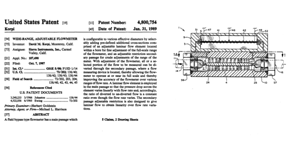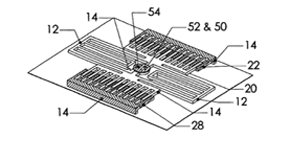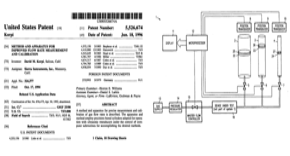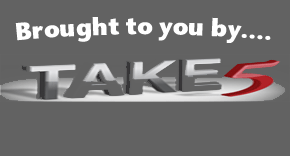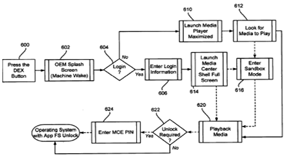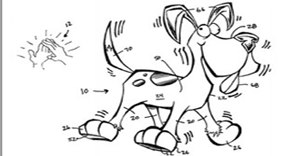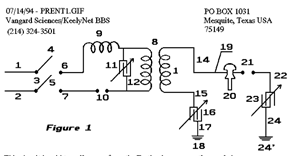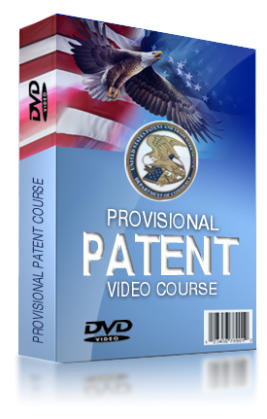The Truth About Patents
The Truth About Patents
Patenting is complex process and not always cheap… nor much protection. If I violate your patent, it is up to you to prove that I did and sue me for damages. If I could afford a lot of legal services, you might find that you would go bankrupt trying to protect what I had stolen. Many have. Many use the Provisional Application for Patent as an “Insurance Policy” that costs just $125 from the USPTO that gives them one year to file their follow on Non-Provisional Utility patent application..
What is a patent worth? Could be millions or nothing, or just a few thousand dollars… How much would some CEO of a company pay if you held a patent application for a system that sounded the horn when you filled your tires with air when they reached the ideal pressure? Wait! Some dude DID invent this and it is worth millions! And.. it was a VERY SIMPLE invention.. We had horns, we had wireless tire pressure transducers.. The BRILLIANCE was to marry the two and make a simple indicating system. The government does nothing to protect you other than give you the paper that says you had the idea first. In return, it requires that you tell anyone who wants to read the patent exactly how your idea works. They don’t investigate or prosecute a violation of a patent, it’s a civil matter only.
Alternatives? The formula for Coca Cola was never patented- but it’s secret, commonly cal, which is far better as patents rights have a time limit and run out. Of course, not everything can be used and still be kept secret.
Another method is to have a non-disclosure agreement (get one at that link..). That is a document someone who is going to be shown your idea signs, agreeing that they will not exploit it or disclose it without your express permission, and exposing them to damages if they do. I run a prototype development business, and we sign those every time we look at a project. All who have access to the workshop or project do the same. This gives the inventor or owner of the product/idea protection from loss of his idea either from our taking advantage of it or someone working or visiting here disclosing it without authority.
To be able to claim the idea is yours you will need to be able to show that it was developed by you prior to the date that someone else can document it being developed elsewhere. Numerous means are used for this. One is a registered letter containing the description and details, sealed in a secure way that would positively indicate if opened, sent to yourself and then stored unopened. Another is a disclosure to a trusted person, wherein they sign and date it. This amounts to an affidavit. Multiple means and good records are the way to go.
A patent can be issued for something very simple. What can’t be patented is something that is not an original idea, or is a combination of original ideas. For example you could patent a pencil or an eraser- but not the combination of the two previously invented items by attaching the eraser to the pencil.
What can’t be patented can usually be copyrighted. Books, designs for clothing and all kinds of things, music, etc- are protected by copyrights, which says that a particular arrangement of materials, chemical processes developed or music composed by you constitute intellectual property and belong to you. Technically, things of that nature are automatically copyrighted by first publication. The formal process or registering one just makes it easier to prove. Again- documentation is the key to security.
Bear in mind that regardless of research- most “new” ideas have been thought of before. A tool company might consider an idea for a new wrench, but decide it wasn’t viable at the time and stick it on a shelf. Later you think of it (independently) and try to patent the idea. Even though they didn’t market or patent it, they had the idea first and you would not be able to succeed with your patent application if that was known.
So- IF you have a new idea, there are ways to protect it. There is no way to absolutely say that your idea is genuinely new, but the protection becomes relevant to the date. If you can prove you had worked on it before I did- you still have leverage. Welll… at least till April 2013 when the America Invents Act brings us to a First To File… If you need to file any kind of Intellectual Property protection then take a look at the Provisional Application for Patent as an ideal method to investigate..
The Truth About Patents
Why Patent Attorneys Hate the Provisional Patent Application
Why Patent Attorneys Hate the Provisional Patent Application
Why Patent Attorneys Hate the Provisional Patent Application.. ANSWER: They do not make much money when they file them for you. They will almost ALWAYS tell you that you should file a non-provisional patent application. Let me show you why they should NOT tell you this… And why you should not deal with those who make such claims.. Find another attorney IMMEDIATELY!
I am here to tell you that those attorneys who make those claims are un-scrupulous and should be more honest. However, there ARE super smart attorneys who will COMPLETELY support you for a very fair price to file a provisional patent application. The reason.. If they help you with your provisional patent application and they charge you a fair price they know that you will surely COME BACK to them when you are ready to file your non-provisional patent application! No brainer, right? This is one reason Why Patent Attorneys Hate the Provisional Patent Application.
The un scrupulous attorneys will likely say a provisional patent application worthless is because in order for a patent application to be useful it must be complete at the time of filing. Well duh! The MAIN reason they do not like provisional patent applications is that they can not justify their high fees on an application that only costs $125 to file and that the provisional patent application offers ZERO dollars to the attorney because there are no “office actions” that make them the bulk of their money. Trust me, Congress WANTS you to patent your idea because if you make a million dollars on it THEY will collect TAX from YOU. The provisional patent application is an extraordinary choice for you if funds are of concern and you are of the mind that you can find a partner within one year.
Also, your provisional patent application is the first part of your journey to a non-provisional patent application. As such, you must describe your inventive idea so that one “skilled in the art” or someone familiar with the technology (as well as a fifth grader) could both make and use the invention having only read YOUR provisional patent application. Please note that your provisional patent application is NOT public, so nobody else can ever read it! However, if they were given a chance to read it they should be able make it and use it. In other words, your provisional patent application must explain your invention with as much detail as possible and even with the level of detail and explanation that would be included in an extraordinary instruction manual that describes both the use and exactly how to make your inventive idea. Your drawings do NOT have to be professional. They could be scribble sketches. As long as someone could use them to figure out your inventive idea your sketches are sufficient. It does NOT hurt to have beautiful sketches though! Heck, go to your local High School and ask the art teacher who the best artist for line drawings is and give the kid a gift card to McDonalds to draw your drawings for you!
This level of detail is EXACTLY what is required in a non provisional patent application, so when an attorney tells you to file a non-provisional patent application because of these reasons just be aware that the EXACT same reasons hold for a non-provisional patent application. You can NOT add “new matter” to a provisional patent application as well as you can NOT add “new matter” to a provisional patent application. Attorneys will “trick” you telling you they are different, they are different in that the provisional is MUCH LESS formal and as such you have the latitude to explain MORE than you EVER would in a non-provisional patent application. This has EXTRAORDINARY benefits when it comes time to convert.
Please understand that any attorney worth his salt will be able to write both a provisional or a non provisional very quickly and not have to suffer many “Office Actions” However, the fact of the matter is just about EVERY attorney relies on these “Office Actions” for the bulk of their billing income. The number of “Office Actions” are a measure of how often the “teacher” (the USPTO) corrects “your” (your attorney) paper for spelling and syntax errors. Do you believe that an EXTRAORDINARY patent attorney knows enough to NOT make spelling and syntax errors? Really… Anyway, attorneys HATE it when I mention this! If you want you can get “file wrappers” for every patent any patent attorney has ever filed. With these you can actually see how “good” an attorney is. A good attorney will always get your “free” 20 claims with the fewest “Office Actions” thereby meaning at the lowest cost to you. Yet another reason Why Patent Attorneys Hate the Provisional Patent Application!
What the provisional patent application provides is it gives you is TIME and it does so at a very low cost. The Provisional patent application allows you one year (there is even a provision to file “missing parts” to extend this to 2 years!) to find a partner and further develop your inventive idea. Frequently, the partner you choose will want to use their own patent attorney to file the non provisional patent application so you actually NEVER have to pay for the expense of a non-provisional patent application.
Anything that is not included in the provisional patent application is not considered to be a part of your invention. Duh!, right? For this reason you will frequently hear patent attorneys tell you that a provisional patent application is helpful ONLY to protect whatever is included in the application . In other words the provisional patent application is only as good as the level of detail you include, which is why you want to not only describe your invention but also any possible alternatives and variations that are known to you at the time of filing. Same with a non-provisional patent application. So if you are ready to file ANY patent and you have a low budget there is ABSOLUTELY no reason to file a non-provisional patent application. None, period!
When you prepare and file your provisional patent application you must make sure that you cover not only what you have specifically invented, but you must include any and all alterations and variations that you can imagine that may be contemplated by a competitor because if and when you start making money you may see competitors why try to copy your inventive idea. In the “art” this is referred to as the “preferred embodiment” which should include extensive details of the inventive idea. Smart competitors will attempt not to infringe on your inventive rights, which means they will seek to compete as closely and as directly as possible but in a way that they feel does not technically and literally mimic your invention. Variations and alternatives are crucial to any patent application and provisional patent applications are no exception and when you file your provisional patent application you will want to ANTICIPATE what others might do to copy your idea and cover that in your provisional patent application.
It is therefore very important that you include any and all alternatives and variations can be included in your provisional patent application even if they are not ideal or fully developed, and even if they do not work very well or you do not know HOW they will EVER work. This is where inventors frequently make big mistakes. Why would anyone want to do something that may not work or even try to patent something that is not fully developed?
The answer is, drumroll please, there is plenty of money to be made selling inferior products! You want a patent that covers what works best as well as what may work and what may not work because of technology has not caught up with your inventive ideas implementation! The provisional patent application allows you to do this! You CAN NOT cover more than one inventive idea in a non-provisional patent! The ABSOLUTE beauty of a provisional patent application is that it can be viewed as an inexpensive “insurance policy” as well as an extraordinary “defensive document” to anticipate having to deal with “Office Actions”. VERY FEW attorneys will EVER tell you this. In fact, your provisional patent may “spin off” many independent patentable ideas with one single submission! Another reason Why Patent Attorneys Hate the Provisional Patent Application?
You have surely heard that if you were the first to invent the automobile you would want to have your patent cover the Yugo version, the Rolls Royce version and the Ferrari version and everything in between. As such, you must think of your invention not only as what works best, what may work, what marginally works as well as what may work 12 years from now when the technology catches up!
So, guys and gals.. This is why patent attorneys hate the Provisional Patent Application. As such I suggest that you file your provisional patent application yourself using the Provisional Patent Video Course so that you can learn EXACTLY what you need to file an extraordinary provisional patent application. You should even buy the Provisional Patent Video Course even if you find a great attorney as following the course will save you thousands because you will go to your attorney completely prepared.
End of: Why Patent Attorneys Hate the Provisional Patent Application
What is a Patent?
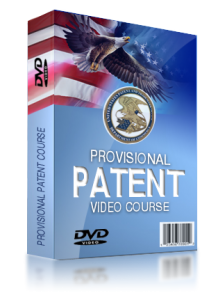 What is a Patent?
What is a Patent?
A patent is a document issued by the US Patent and Trademark Office, USPTO, a branch of the Federal Government that grants the owner the monopolistic right to their inventive idea for a period of 20 years. In return for that monopolistic right the inventor MUST disclose the invention COMPLETELY so that a person of ordinary skill in the art will be able to duplicate the invention. You must also pay the USPTO fees to keep your patent alive and active for the 20 years.
The USPTO does not do ANYTHING but publish the document. It is the OWNERS responsibility to DEFEND their patent by bringing any infringers of their invention to court. If this happens then the court looks at the patent to determine if the infringer has truly infringed on the invention. If so then the court may award a settlement to the owner of the patent. It remains the responsibility of the owner to collect what ever is awarded. Sometimes the awards are enormous and as such many folks file or buy patents with the design to catch folks who copy their patents. These folks are commonly called Patent Trolls. Or, they could be a guy who invents a cool product that he can not afford and then notices someone has brought out HIS idea. He has the right to sue that person!
What is a Patent? If you want to get a patent on YOUR idea the least expensive path is to FIRST file a Provisional Patent Application for the small fee of $125 if you are an independent inventor. The Provisional Patent Application is an extraordinary defensive means as well giving the owner the ability to describe their inventive art in ways that are not permitted in a non-provisional patent application.
The answer to What is a Patent? is nicely answered in Wikipedia… in their What is a Patent? posting
What is a Patent? If you want to see EXACTLY HOW to file a Provisional Patent Application using a novel Over the Shoulder Video Course click this link: Provisional Patent Video Course
What is a Patent?
In order for a patent to be accepted by the USPTO, it must propose a concept, idea, or item that is “useful,” “novel,” and “non-obvious.” Below are definitions of these terms in the context of the patent process.
“Useful” - The term “useful” means that the subject matter has a useful purpose. It also requires that the item is operable, since a machine that can not perform its intended purpose cannot be considered useful in the ordinary sense of the word.
“Novelty” - “Novelty” is strictly defined by patent law. An invention cannot be patented if:
- The invention was known or used by others in the United States before the patent applicant invented it.
- The invention was patented or described in any printed publication, before the patent applicant invented it.
- The invention was patented or described in a printed publication in any country more than one year prior to the inventor’s U.S. patent application.
- The invention was in public use or on sale in the United States more than one year prior to the inventor’s U.S. patent application.
“Nonobviousness” - Even if a new invention differs in one or more ways from another patented invention, a patent may still be not be accepted by the USPTO if the differences to one skilled in the art would deem it would be obvious. Nonobviousness is defined as a sufficient difference from what has been used or described before that a person having ordinary skill in the area of technology related to the invention would not find it obvious to make the change.
For example, sodium chloride, NaCl, (table salt) and potassium chloride , KCl, (a chemically similar salt) can often be used interchangeably. A inventor working to improve road salt would be instructed by the USPTO that it is obvious to one skilled in the arts would know to substitute potassium chloride for sodium chloride. As such a formula that simply made this substitution in an existing patented road salt formula would not be patentable because it was obvious.
Of course these rules do not prevent a person from patenting an improvement to another invention, however. For example, tire companies have long known various formulas for making tire rubber for specific uses. If an inventor discovers a new and novel way to make tire rubber that would last twice as long by slightly changing the chemical composition or method of processing the rubber then this inventive ide could well be a patentable improvement as long as the difference was not obvious to one skilled in the art.
Now… you have a better idea about your question of What is a Patent? watch for more as I post more on the subject!

